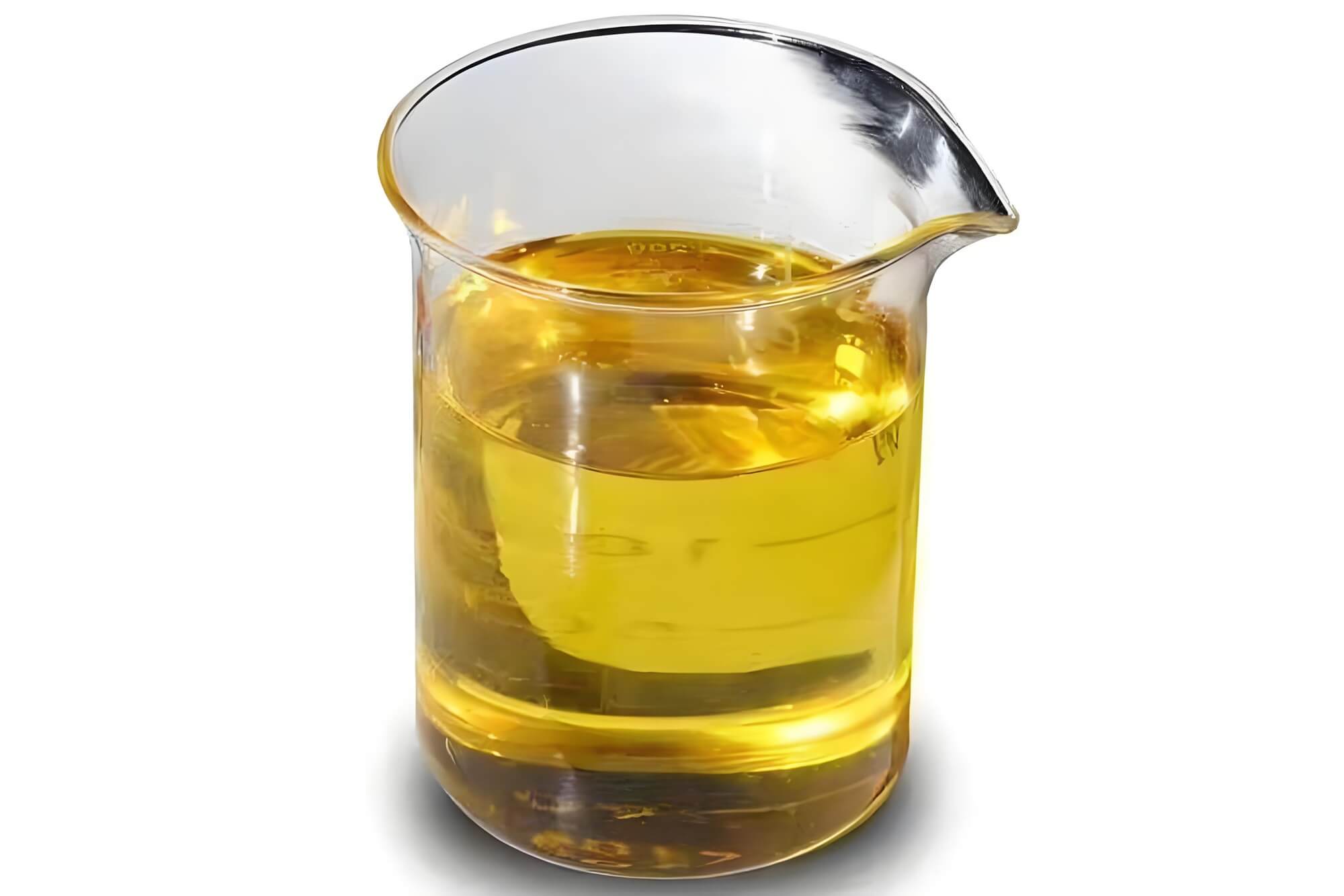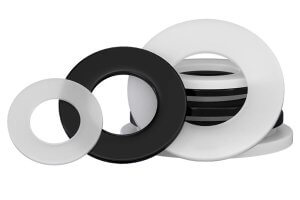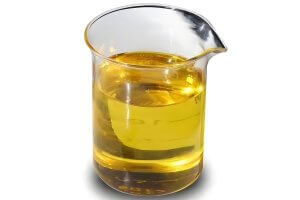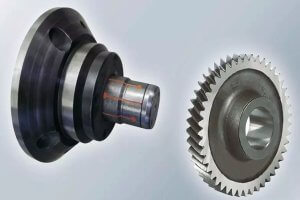Introduction: The Art and Science of Precision Machining
In the high-stakes world of modern manufacturing, precision is not just a goal—it’s the cornerstone of success. Industries such as aerospace, automotive, hydraulics, and medical device manufacturing rely on components engineered to microscopic tolerances. A hydraulic cylinder in an aircraft’s landing gear, an engine block in a high-performance vehicle, or a critical part in a life-saving medical implant must perform flawlessly under extreme conditions. These components demand geometric perfection, dimensional accuracy, and surface finishes that minimize friction and wear. This is the domain of CNC honing, a sophisticated finishing process that achieves unparalleled precision in bore geometry, surface texture, and dimensional integrity.
Honing is the final, transformative step that elevates a machined part into a high-performing component. It corrects imperfections such as taper, out-of-roundness, or surface irregularities, ensuring seamless assembly and optimal functionality. The process creates a unique cross-hatch pattern on the bore surface, which retains lubrication to reduce friction and extend component life. While CNC machines and abrasive honing stones are the visible stars of this process, honing oil is the unsung hero. Honing oil enables efficient material removal, protects expensive tooling, ensures superior surface quality, and drives the profitability of the operation. This comprehensive guide delves into the science of honing oil, exploring its critical functions, chemical composition, selection criteria, maintenance strategies, and the cutting-edge innovations shaping its future in honing oil technology.
Understanding the CNC Honing Process
To fully appreciate the role of honing oil, one must first understand the mechanics of CNC honing. This precision machining process refines the internal surface, or bore, of a cylindrical workpiece using bonded abrasive stones. The honing tool, guided by advanced Computer Numerical Control (CNC) systems, simultaneously rotates and reciprocates within the bore. This dual motion is meticulously programmed to control spindle speed (rotation), reciprocation speed (stroke), and the feed rate at which the abrasive stones expand to remove material. CNC automation ensures unmatched consistency, making it indispensable for high-volume production where every part must meet exacting standards.
The process is highly versatile, used across industries to finish components like engine cylinders, hydraulic pistons, fuel injectors, and medical implants. Unlike other machining methods, CNC honing excels at achieving tight tolerances—often within microns—while creating a functional surface texture that enhances performance. Honing oil plays a pivotal role in this process, lubricating the abrasive-workpiece interface, cooling the cutting zone, and flushing away debris to maintain precision.
The Signature Cross-Hatch Pattern
The hallmark of honing is the cross-hatch pattern formed on the bore surface by the tool’s simultaneous rotation and reciprocation. This pattern is not merely aesthetic; it’s a highly engineered feature designed to retain a thin film of honing oil on the cylinder wall. These microscopic grooves act as reservoirs, reducing metal-to-metal contact and minimizing friction and wear in dynamic applications, such as a piston moving within an engine cylinder. By adjusting the ratio of rotational to stroking speed, engineers can precisely control the cross-hatch angle—typically between 30° and 60°—to optimize lubrication retention for specific performance requirements. For example, a steeper angle may be preferred for high-speed engines, while a shallower angle suits applications requiring maximum oil retention.
Honing vs. Other Finishing Processes
Honing is often compared to grinding and lapping, but its unique combination of precision and surface functionality sets it apart. The table below highlights key differences:
| Feature | CNC Honing | Grinding | Lapping |
| Process | Bonded abrasive stones rotate and reciprocate at low speeds within a bore. | High-speed abrasive wheel removes material under high pressure. | Loose abrasives on a lap plate achieve fine finishes under low pressure. |
| Primary Goal | Perfect bore geometry, size control, and cross-hatch for lubrication retention. | Precise sizing and finishing of hardened components like gears or shafts. | Extreme flatness and ultra-smooth surfaces for optical or sealing applications. |
| Tooling | Soft, self-dressing stones (e.g., aluminum oxide, diamond, CBN). | Hard, bonded grinding wheels. | Flat lap plate with abrasive slurry. |
| Key Outcome | Geometrically perfect bore with functional cross-hatch pattern. | Precise dimensions on hardened metals. | Ultra-smooth, reflective surfaces with superior flatness. |
| Coolant Role | Honing oil lubricates, cools, and flushes swarf for optimal finish. | Cools to prevent overheating and maintain surface integrity. | Distributes abrasives for gradual material removal. |
Honing’s ability to balance geometric correction with surface functionality makes it ideal for applications requiring both precision and durability. Honing oil is integral to achieving these outcomes, ensuring the abrasive stones work efficiently without damaging the workpiece or tooling.

The Four Pillars of Honing Oil: Core Functions
Honing oil is far more than a lubricant; it’s a multi-functional fluid engineered to perform four critical tasks in unison: lubrication, cooling, cleaning, and protection. The success of any CNC honing operation depends on how well honing oil executes these functions, working in harmony to deliver precision and efficiency.
Pillar 1: Lubrication
At its core, honing oil reduces friction by forming a protective film between the abrasive stones and the workpiece. This lubrication prevents surface damage, such as welding or tearing of metal chips, which could compromise the finish. It also minimizes wear on abrasive stones and tool guides, extending their lifespan and reducing tooling costs. High-lubricity honing oils, often enhanced with specialized additives, allow operators to use harder abrasives and higher pressures, accelerating material removal and boosting productivity.
Pillar 2: Cooling
Honing generates significant heat due to friction at the cutting interface. Honing oil absorbs and dissipates this heat, preventing thermal distortion of the workpiece. Without effective cooling, the workpiece may expand during machining and contract upon cooling, falling outside specified tolerances. By maintaining stable temperatures, honing oil ensures dimensional accuracy and consistent part quality.
Pillar 3: Cleaning
As abrasive stones remove material, they produce fine metal and abrasive particles known as swarf. Honing oil acts as a flushing agent, continuously washing swarf away from the cutting zone. This prevents stone glazing—where swarf clogs the abrasive pores, reducing cutting efficiency—and avoids surface scratches caused by trapped particles. Effective cleaning is critical for maintaining a high-quality finish and prolonging tool life.
Pillar 4: Protection
The freshly honed surface is highly reactive and prone to oxidation. Honing oil forms a protective barrier, shielding the workpiece and machine components from rust and corrosion. This protective function is especially critical in humid or corrosive environments, ensuring the longevity of both the part and the CNC equipment.
Balancing Lubrication and Cooling
A fundamental challenge in honing oil formulation is balancing lubrication and cooling. High-viscosity honing oils excel at lubrication but have limited heat dissipation, while low-viscosity fluids offer superior cooling but may lack sufficient lubricity for high-pressure operations. Water-based honing oils provide excellent cooling but require additives to enhance lubrication and prevent corrosion. Selecting the optimal honing oil involves tailoring its properties to the material, abrasive, and machining parameters.
Deconstructing Honing Oil: Composition and Chemistry
The performance of honing oil is driven by the synergy between its base stock and additive package, each carefully formulated to meet the demands of CNC honing.
Base Stocks: The Foundation of Honing Oil
The base stock forms the bulk of honing oil, determining its core lubricating and cooling properties. Three primary classes are used:
- Neat Oils (Petroleum/Mineral-Based): These traditional honing oils are prized for their excellent lubricity, making them ideal for heavy-duty honing of steels. Modern formulations use solvent-refined or hydrotreated mineral oils to remove impurities like polynuclear aromatic hydrocarbons (PAHs). Their main limitation is poor cooling capacity, which can lead to thermal issues in high-speed operations.
- Synthetic Oils (PAOs, PAGs, Esters): Chemically engineered for superior thermal stability and viscosity consistency, synthetic honing oils perform well across a wide temperature range. They resist oxidation and sludge formation, making them suitable for high-performance applications. However, their higher cost and potential incompatibility incompatibilities with mineral oils require careful system management.
- Water-Based Fluids: Supplied as concentrates to be diluted with water, these honing oils include soluble oils, semi-synthetics, and full synthetics. Soluble oils (emulsions) balance lubrication and cooling, while semi-synthetics offer improved cleanliness. Full synthetics provide maximum cooling and are ideal for high-speed honing or superabrasive applications, though they may lack lubricity without additives.
| Base Stock Type | Primary Advantage | Primary Disadvantage | Typical Application |
| Neat Mineral Oil | Excellent lubricity | Poor cooling, flammability | Heavy-duty, low-speed honing of steels |
| Synthetic Oil | Thermal stability, wide temp range | High cost, incompatibility | High-performance, extreme-temperature honing |
| Soluble Oil | Balanced lubrication/cooling | Moderate corrosion control | General-purpose honing |
| Semi-Synthetic | Good cooling, cleanliness | Lower lubricity than solubles | High-production, non-ferrous machining |
| Full Synthetic | Maximum cooling, cleanliness | Lowest lubricity | Grinding, high-speed honing, diamond abrasives |
Additive Package: Enhancing Honing Oil Performance
Additives transform honing oil into a high-performance fluid tailored for CNC honing:
- Extreme Pressure (EP) and Anti-Wear (AW) Agents: These form sacrificial films under high pressure, preventing metal-to-metal contact and reducing wear. Common additives include sulfur, chlorine, and zinc dialkyldithiophosphate (ZDDP).
- Lubricity Improvers: Surface-active agents enhance slickness, reducing friction and improving surface finishes, especially for tough materials like stainless steel.
- Corrosion Inhibitors: These neutralize acids and form moisture-repelling barriers to prevent rust on workpieces and machines.
- Detergents and Dispersants: Detergents clean surfaces, while dispersants suspend contaminants like swarf for filtration, preventing sludge buildup.
- Antifoaming Agents: Silicone-based additives reduce foam, ensuring honing oil maintains its lubricating and cooling properties.
- Metal Deactivators: These prevent chemical reactions with copper alloys, avoiding staining on materials like brass or bronze.
Additive formulation is a delicate science. Overloading honing oil with additives can lead to antagonism, where compounds compete for surface adhesion, reducing overall performance. For example, excessive anti-wear agents may crowd out corrosion inhibitors, increasing rust risk. Professional honing oil formulations from reputable suppliers balance these interactions for optimal results.

Selecting the Right Honing Oil: A Master Guide
Choosing the right honing oil is critical for achieving precision and efficiency. The decision hinges on two primary factors: the workpiece material and the abrasive type.
Selection by Workpiece Material
Different materials produce distinct chip types and have unique chemical properties, influencing honing oil requirements:
- Cast Iron: Produces fine, powdery swarf that can clog abrasive stones. A low-viscosity honing oil ensures effective flushing to prevent stone loading and maintain cutting efficiency.
- Steel and Stainless Steel: These materials form tough, stringy chips that risk welding to the workpiece, causing surface tearing. A high-lubricity honing oil with robust EP additives (e.g., sulfurized compounds) forms a strong boundary film to ensure smooth cutting.
- Aluminum and Non-Ferrous Alloys (Brass, Bronze): Soft and prone to material pickup on the stone, these alloys require non-staining honing oil with high lubricity, often fortified with fatty additives. Metal deactivators prevent discoloration from sulfur-based additives.
- Carbide: Honing cemented carbide risks leaching the cobalt binder, weakening the part. Specialized oil-free synthetic honing oils with cobalt inhibitors are essential to protect structural integrity.
- Nikasil Plating: Used in high-performance engine cylinders, Nikasil requires high-quality honing oil for deglazing, ensuring compatibility with fine-grit aluminum oxide abrasives to avoid damaging the coating.
Selection by Abrasive Type
The abrasive material influences honing oil choice, particularly with superabrasives:
- Conventional Abrasives (Aluminum Oxide, Silicon Carbide): These work well with mineral-based honing oil for general-purpose honing. The fluid choice aligns with the workpiece material, prioritizing lubricity for steels or flushing for cast iron.
- Diamond: Extremely durable, diamond abrasives pair well with water-based honing oils for their cooling and cleanliness. In high-pressure or soft-material applications, specialized high-lubricity honing oils protect the costly diamond tool.
- Cubic Boron Nitride (CBN): Ideal for hardened steels due to its thermal and chemical stability, CBN performs best with specialized honing oils designed to withstand high temperatures and support clean cutting.
Honing Oil and Abrasive Selection Matrix
| Workpiece Material | Recommended Abrasive | Recommended Honing Oil | Key Considerations |
| Cast Iron | Silicon Carbide, Aluminum Oxide | Low-Viscosity Mineral Honing Oil | Flush fine swarf to prevent stone loading. |
| Carbon/Alloy Steel | Aluminum Oxide, CBN | Sulfurized EP Honing Oil | Prevent welding of stringy chips with high lubricity. |
| Stainless Steel | Aluminum Oxide, CBN | High-EP Honing Oil | Maximum lubricity for tough, stringy materials. |
| Aluminum | Silicon Carbide, Diamond | Non-Staining Honing Oil | Prevent material pickup and discoloration. |
| Bronze/Brass | Silicon Carbide, Diamond | Non-Staining Honing Oil with Deactivators | Avoid sulfur to prevent staining copper alloys. |
| Carbide | Diamond | Synthetic Honing Oil with Inhibitors | Prevent cobalt leaching to maintain part integrity. |
| Nikasil Plating | Aluminum Oxide (Fine Grit) | High-Quality Honing Oil | Use for deglazing; avoid silicon carbide. |
Honing Oil in Action: System Management and Maintenance
Selecting the right honing oil is only the first step. A robust maintenance program is essential to sustain its performance, extend tool life, and minimize costs. Contamination from swarf, tramp oils (e.g., hydraulic fluid leaks), or water can degrade honing oil, leading to poor surface finishes, scrapped parts, and accelerated tool wear.
Filtration: The Backbone of Honing Oil Maintenance
Effective filtration keeps honing oil clean and functional:
- Barrier Filters (Paper, Cartridge, Bag): These trap larger particles but struggle with sub-micron fines and require frequent replacement, increasing downtime and costs.
- Magnetic Filtration: Ideal for ferrous materials, magnetic filters capture fine metallic particles missed by barrier filters. Reusable and cost-effective, they reduce waste.
- Central vs. Individual Systems: Centralized filtration systems service multiple machines, offering economies of scale but requiring complex plumbing. Dedicated systems are simpler but less scalable.
Best Practices for Honing Oil Maintenance
- Multi-Stage Filtration: Combine barrier filters for coarse particles with magnetic filters for fine ferrous swarf.
- Regular Filter Changes: Replace consumable filters based on usage to maintain honing oil cleanliness.
- System Cleanouts: Perform biannual flushes, draining old honing oil, cleaning reservoirs, and recharging with fresh fluid.
- Fluid Monitoring: Use visual inspections or lab analysis to track swarf levels, viscosity, and additive depletion in honing oil.
- Prevent Cross-Contamination: Use dedicated containers and pumps to avoid mixing incompatible honing oils, such as water-based and mineral-based fluids.
Investing in filtration and maintenance reduces honing oil consumption, extends tool life, minimizes downtime, and lowers scrap rates, directly boosting profitability.
Troubleshooting Honing Oil-Related Issues
When honing issues arise, honing oil is often a contributing factor. The table below diagnoses common problems and solutions:
| Problem | Potential Honing Oil Cause | Solution |
| Poor Surface Finish | Wrong honing oil type, low lubricity, contamination | Verify honing oil selection, enhance filtration, use high-lubricity oil. |
| Surface Scratches | Ineffective swarf flushing, low honing oil flow | Increase honing oil flow and pressure, filter or replace contaminated oil. |
| Stone Glazing/Loading | High-viscosity honing oil, poor flushing | Switch to low-viscosity honing oil, increase flow, dress stones. |
| Slow Stock Removal | High-viscosity honing oil, low lubricity | Use low-viscosity, high-EP honing oil to support higher pressures. |
| Tapered/Out-of-Round Bore | Uneven honing oil cooling, high heat | Ensure even honing oil flow, use better-cooling oil (e.g., synthetic). |
| Chatter (Vibration Marks) | Poor honing oil lubrication, stick-slip friction | Increase honing oil flow, use high-lubricity oil, adjust stroke rate. |

The Future of Honing Oil: Innovations in Performance and Sustainability
The evolution of honing oil is driven by the dual demands of performance and environmental responsibility. Emerging technologies are redefining honing oil for the next generation of CNC machining.
Biodegradable Honing Oils
The shift toward sustainable manufacturing has spurred the development of biodegradable honing oils, formulated from renewable sources like vegetable oils or synthetic esters. These eco-friendly fluids offer:
- Natural degradation, reducing environmental contamination.
- Low toxicity, enhancing operator safety and reducing health risks.
- Improved workplace conditions with lower odor, mist, and smoke compared to mineral-based honing oils.
Modern biodegradable honing oils rival the performance of traditional oils, closing the gap in lubricity and durability through advanced formulations.
Nanotechnology in Honing Oil
Nanotechnology is revolutionizing honing oil performance by incorporating nanoparticles like aluminum oxide, molybdenum disulfide, graphene, or carbon nanotubes. These particles enhance honing oil through:
- Tribofilm Formation: Depositing low-friction layers on metal surfaces.
- Rolling Effect: Acting as microscopic ball bearings to reduce friction.
- Surface Mending: Filling microscopic imperfections for smoother finishes.
Nanoparticles also improve thermal conductivity, boosting the cooling capacity of honing oil. The challenge lies in maintaining stable nanoparticle dispersion, often achieved through ultrasonic mixing techniques.
Convergence of Sustainability and Performance
The future of honing oil lies in combining biodegradable base stocks with nanotechnology. These next-generation honing oils—such as synthetic esters infused with nanoparticles—offer elite performance with minimal environmental impact. They promise superior lubricity, cooling, and tool life while meeting stringent sustainability regulations, making them ideal for forward-thinking manufacturers.
Practical Applications of Honing Oil Across Industries
The versatility of honing oil makes it indispensable across diverse applications:
- Aerospace: Honing oil ensures precision in hydraulic cylinders and landing gear components, where tolerances are critical for safety.
- Automotive: High-lubricity honing oils refine engine cylinders and fuel injectors, enhancing performance and fuel efficiency.
- Medical Devices: Synthetic honing oils deliver ultra-smooth finishes for implants, ensuring biocompatibility and reliability.
- Hydraulics: Honing oil maintains tight tolerances in pistons and valves, reducing leakage and wear in high-pressure systems.
By tailoring honing oil to specific applications, manufacturers achieve optimal results while minimizing costs and environmental impact.
Economic and Operational Benefits of Optimized Honing Oil
Investing in high-quality honing oil and robust maintenance yields significant returns:
- Reduced Tooling Costs: Effective lubrication and cleaning extend abrasive stone life.
- Lower Scrap Rates: Proper honing oil selection ensures consistent part quality, minimizing rejects.
- Increased Uptime: Clean honing oil and efficient filtration reduce machine downtime.
- Sustainability Gains: Biodegradable honing oils lower disposal costs and environmental penalties.
These benefits translate into measurable cost savings and competitive advantages in precision manufacturing.
Conclusion: Honing Oil as the Cornerstone of Precision
Honing oil is the linchpin of CNC honing, enabling precision through its multifaceted roles in lubrication, cooling, cleaning, and protection. Its complex chemistry—balancing base stocks and additives—requires careful selection to match workpiece materials and abrasives. Robust maintenance, including advanced filtration and regular monitoring, ensures honing oil performs consistently, reducing costs and enhancing part quality. As innovations like biodegradable honing oils and nanotechnology reshape the industry, mastering the science of honing oil is essential for achieving the highest standards in precision manufacturing. Manufacturers should partner with reputable honing oil suppliers to optimize their processes and stay ahead in a competitive, sustainable future.
FAQ:
1. What is honing oil, and why is it critical in CNC machining?Honing oil is a specialized fluid used in CNC honing to lubricate, cool, clean, and protect the workpiece and tooling. It reduces friction between abrasive stones and the workpiece, preventing surface damage and tool wear. Honing oil also dissipates heat to maintain dimensional accuracy, flushes away swarf to ensure a smooth finish, and protects against corrosion. In CNC machining, honing oil is critical for achieving tight tolerances, extending tool life, and ensuring high-quality surface finishes, directly impacting part performance and production efficiency.
2. How does honing oil differ from other machining fluids?Unlike general machining fluids, honing oil is formulated specifically for the low-speed, high-precision nature of CNC honing. It balances four key functions: lubrication, cooling, cleaning, and protection. While grinding fluids prioritize cooling to manage high-speed heat, honing oil emphasizes lubricity to support the abrasive stones’ gentle cutting action and create a functional cross-hatch pattern. Honing oil also prevents stone glazing and corrosion, making it uniquely suited for refining bore geometry in materials like steel, aluminum, or carbide.
3. How do I choose the right honing oil for my CNC honing process?Selecting the right honing oil depends on the workpiece material and abrasive type. For cast iron, use low-viscosity honing oil to flush fine swarf. Steel and stainless steel require high-lubricity honing oil with extreme pressure (EP) additives to prevent chip welding. Aluminum and non-ferrous alloys need non-staining honing oil with metal deactivators, while carbide demands synthetic honing oil with cobalt inhibitors. For abrasives, conventional stones pair with mineral-based honing oil, while diamond or CBN abrasives may use water-based or specialized honing oils. Consult the article’s selection matrix for guidance.
4. What are the main types of honing oil base stocks?Honing oil base stocks include:
- Neat Oils (Petroleum/Mineral-Based): Offer excellent lubricity for heavy-duty honing but have limited cooling capacity.
- Synthetic Oils (PAOs, PAGs, Esters): Provide thermal stability and consistent viscosity for high-performance applications.
- Water-Based Fluids (Solubles, Semi-Synthetics, Full Synthetics): Excel in cooling and cleanliness, ideal for high-speed honing or superabrasives.
Each type of honing oil is tailored to specific materials and machining conditions, with additives enhancing performance for lubrication, corrosion resistance, or swarf flushing.
5. Why is filtration important for honing oil maintenance?Filtration is essential to keep honing oil free of contaminants like swarf, tramp oils, or water, which degrade its performance. Contaminated honing oil can cause stone glazing, surface scratches, or thermal distortion, leading to poor finishes and scrapped parts. Barrier filters trap larger particles, while magnetic filters capture fine ferrous swarf. A multi-stage filtration system ensures honing oil remains clean, extending its life, reducing tool wear, and minimizing production costs. Regular filter changes and system cleanouts further optimize honing oil performance.
6. What are common honing problems caused by improper honing oil?Improper honing oil can lead to several issues:
- Poor Surface Finish: Caused by low-lubricity or contaminated honing oil.
- Surface Scratches: Result from ineffective swarf flushing or low honing oil flow.
- Stone Glazing/Loading: Occurs with high-viscosity honing oil that fails to clean swarf.
- Slow Stock Removal: Linked to low-lubricity honing oil limiting cutting pressure.
- Tapered/Out-of-Round Bores: Caused by uneven cooling from inadequate honing oil flow.
Switching to the correct honing oil type, improving filtration, or adjusting flow can resolve these issues.
Reference:
https://en.wikipedia.org/wiki/Honing_oil
https://patents.google.com/patent/CN107629846A/en
https://simple.wikipedia.org/wiki/Honing_oil
https://www.linkedin.com/pulse/south-korea-honing-oil-market-overview-key-trends-emerging-q3ljf/
Other Articles You Might Enjoy
- Precision Perfected: Elevating CNC Surface Finishing with Vapor Honing Technology
Introduction In the competitive landscape of precision CNC machining, achieving a flawless surface finish efficiently and consistently remains a critical challenge. Manual deburring is labor-intensive, time-consuming, and prone to human…
- Elevating Surface Finish of CNC Machining Parts with High-Speed Techniques
High-speed cutting techniques have revolutionized CNC machining, offering not only increased production efficiency but also superior surface finishes on machined parts. The appeal of high-speed machining lies in its ability…
- How Can Electropolishing Improve the Surface Finish of CNC Machined Stainless Steel?
The Role of Electropolishing in Enhancing CNC Machined Surfaces Electropolishing is a critical finishing process used extensively in the fabrication of stainless steel components. This process not only enhances the…
- How Can Surface Finish Be Optimized in CNC Machining of Stainless Steel?
What Factors Affect Surface Finish in CNC Machining of Stainless Steel? The quality of the surface finish in CNC machining stainless steel is influenced by a variety of factors ranging…
- How to Choose the Right Surface Finish Techniques for Precision CNC Machining of Food Automation Machinery?
Surface Finish in Precision CNC machining Precision CNC machining plays a pivotal role in manufacturing components for food automation machinery. The surface finish of these components is crucial not only…






